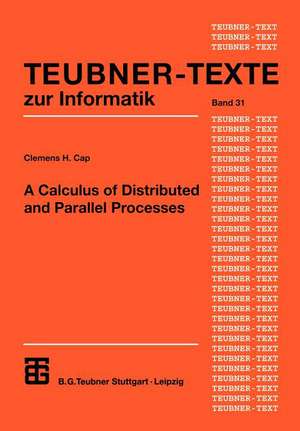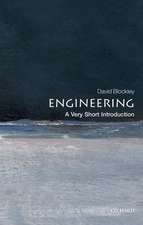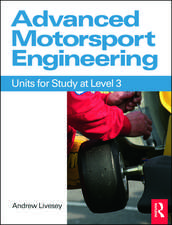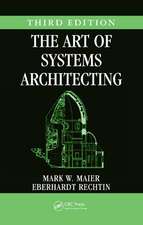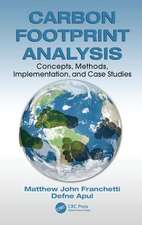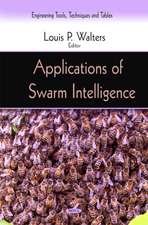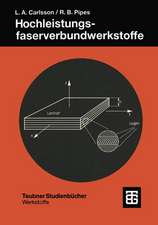A Calculus of Distributed and Parallel Processes: Teubner Texte zur Informatik, cartea 31
Autor Clemens H. Capen Limba Engleză Paperback – 14 mar 2012
Din seria Teubner Texte zur Informatik
-
 Preț: 351.88 lei
Preț: 351.88 lei -
 Preț: 372.07 lei
Preț: 372.07 lei -
 Preț: 354.54 lei
Preț: 354.54 lei -
 Preț: 351.27 lei
Preț: 351.27 lei -
 Preț: 360.70 lei
Preț: 360.70 lei - 20%
 Preț: 425.87 lei
Preț: 425.87 lei - 20%
 Preț: 640.35 lei
Preț: 640.35 lei -
 Preț: 348.39 lei
Preț: 348.39 lei -
 Preț: 351.11 lei
Preț: 351.11 lei -
 Preț: 352.63 lei
Preț: 352.63 lei -
 Preț: 207.35 lei
Preț: 207.35 lei -
 Preț: 357.81 lei
Preț: 357.81 lei -
 Preț: 349.74 lei
Preț: 349.74 lei -
 Preț: 314.03 lei
Preț: 314.03 lei -
 Preț: 351.86 lei
Preț: 351.86 lei -
 Preț: 485.99 lei
Preț: 485.99 lei -
 Preț: 488.66 lei
Preț: 488.66 lei -
 Preț: 274.23 lei
Preț: 274.23 lei -
 Preț: 489.98 lei
Preț: 489.98 lei - 20%
 Preț: 475.47 lei
Preț: 475.47 lei -
 Preț: 278.46 lei
Preț: 278.46 lei -
 Preț: 280.37 lei
Preț: 280.37 lei -
 Preț: 281.52 lei
Preț: 281.52 lei -
 Preț: 285.97 lei
Preț: 285.97 lei -
 Preț: 422.70 lei
Preț: 422.70 lei
Preț: 644.49 lei
Preț vechi: 758.23 lei
-15% Nou
Puncte Express: 967
Preț estimativ în valută:
123.36€ • 134.04$ • 103.69£
123.36€ • 134.04$ • 103.69£
Carte tipărită la comandă
Livrare economică 21 aprilie-05 mai
Preluare comenzi: 021 569.72.76
Specificații
ISBN-13: 9783322867650
ISBN-10: 332286765X
Pagini: 332
Ilustrații: 320 p.
Dimensiuni: 170 x 244 x 17 mm
Greutate: 0.53 kg
Ediția:Softcover reprint of the original 1st ed. 2000
Editura: Vieweg+Teubner Verlag
Colecția Vieweg+Teubner Verlag
Seria Teubner Texte zur Informatik
Locul publicării:Wiesbaden, Germany
ISBN-10: 332286765X
Pagini: 332
Ilustrații: 320 p.
Dimensiuni: 170 x 244 x 17 mm
Greutate: 0.53 kg
Ediția:Softcover reprint of the original 1st ed. 2000
Editura: Vieweg+Teubner Verlag
Colecția Vieweg+Teubner Verlag
Seria Teubner Texte zur Informatik
Locul publicării:Wiesbaden, Germany
Public țintă
ResearchCuprins
1 Introduction.- 1.1 What is a Process? — An Introduction.- 1.2 Process Theory as Research Area.- 1.3 Elements of Process Theory.- 1.4 Classification of Process Theories.- 1.5 How to Use This Book? — A Reading Guide.- 2 Transition Systems.- 2.1 Ordinary Transition Systems.- 2.2 Interpreting Transition Systems.- 2.3 Typed and Labeled Systems.- 2.4 Non-Determinism, Causality, and Behaviour.- 2.5 Sequential Composition.- 2.6 Fairness.- 3 Distributed Transition Systems.- 3.1 Motivation.- 3.2 Distributed Transition Systems.- 3.3 Non-Determinism, Causality, and Behaviour.- 3.4 Examples of Branching Structures.- 3.5 Branching Structure and Constructions.- 3.6 Branching Structure and Geometry.- 3.7 Confusion.- 3.8 First Order Transition Systems.- 3.9 Fairness.- 4 Higher Order Transition Systems.- 4.1 Motivation.- 4.2 Higher Order Transition Systems.- 4.3 Reversible and Invertible Transitions.- 4.4 Forgetting the Higher Order Structure.- 5 Process Specification Formalisms.- 5.1 Linear Logic and Transition Systems.- 5.2 Linear Logic Process Specification.- 5.3 Extensions of the Formalism.- 5.4 Equivalence and Abstraction for Processes.- 6 Examples.- 6.1 A Specification Language.- 6.2 The Stack.- 6.3 The Bag.- 6.4 Interrupts.- 6.5 Data Replication.- 6.6 The Alternating Bit Protocol.- 6.7 Workflow Management.- 6.8 Fibonacci Numbers.- 6.9 An Implementation.- 7 Categorical Interpretations.- 7.1 The Curry-Howard Correspondence.- 7.2 Transition Systems.- 7.3 Linear Logic.- 8 Conclusions, Challenges, and Opportunities.- 8.1 What Has Been Achieved?.- 8.2 Theoretical Problems.- 8.3 Practical Problems.- 8.4 Speculations.- 8.5 Final Remarks.- A Mathematical Prerequisites.- A.1 Order Structures.- A.2 Monoids.- B Linear Logic.- B.1 Universe of Discourse.- B.2 Motivations for LinearLogic.- B.3 Syntax and Natural Deduction.- B.4 Alternate Natural Deduction.- B.5 Sequent Calculus.- B.6 Syntactic Results.- B.7 Interpretation of Linear Formulae.- C Category Theory.- C.1 Category Theory for the Perplexed.- C.2 Basic Definitions.- C.3 Products, Coproducts, and Duality.- C.4 Functors.- C.5 Natural Transformations.- C.6 Properties of the Product Functor.- C.7 Representation of Categories.- C.8 Cartesian Closed Categories.- C.9 Symmetric Monoidal Closed Categories.- Symbols.
Notă biografică
Prof.Dr. Clemens H. Cap, Universität Rostock
Textul de pe ultima copertă
This book introduces a process calculus for parallel, distributed and reactive systems. It describes the conceptual foundations as well as the mathematical theory behind a programming language, and a number of application examples. The chosen approach provides a framework for understanding the semantics of parallel and distributed systems. Moreover, it can be directly applied to practical problems.
Caracteristici
Aktuelle Forschungsergebnisse
